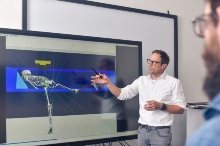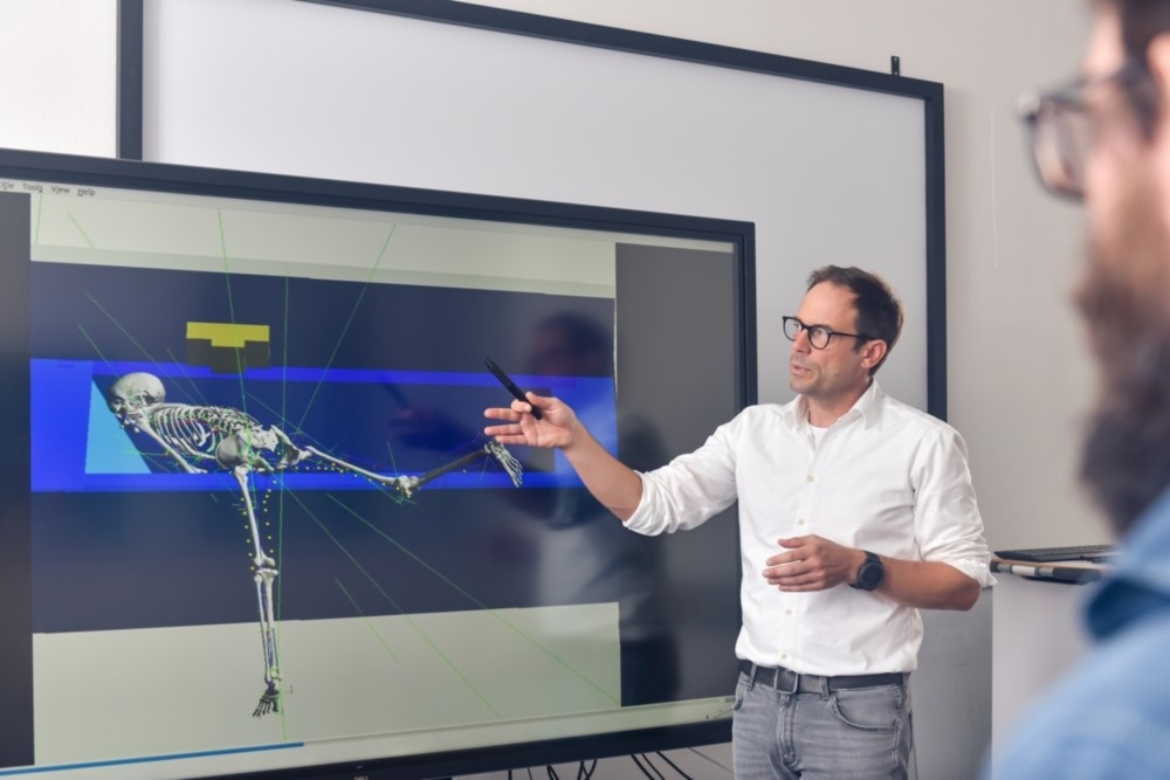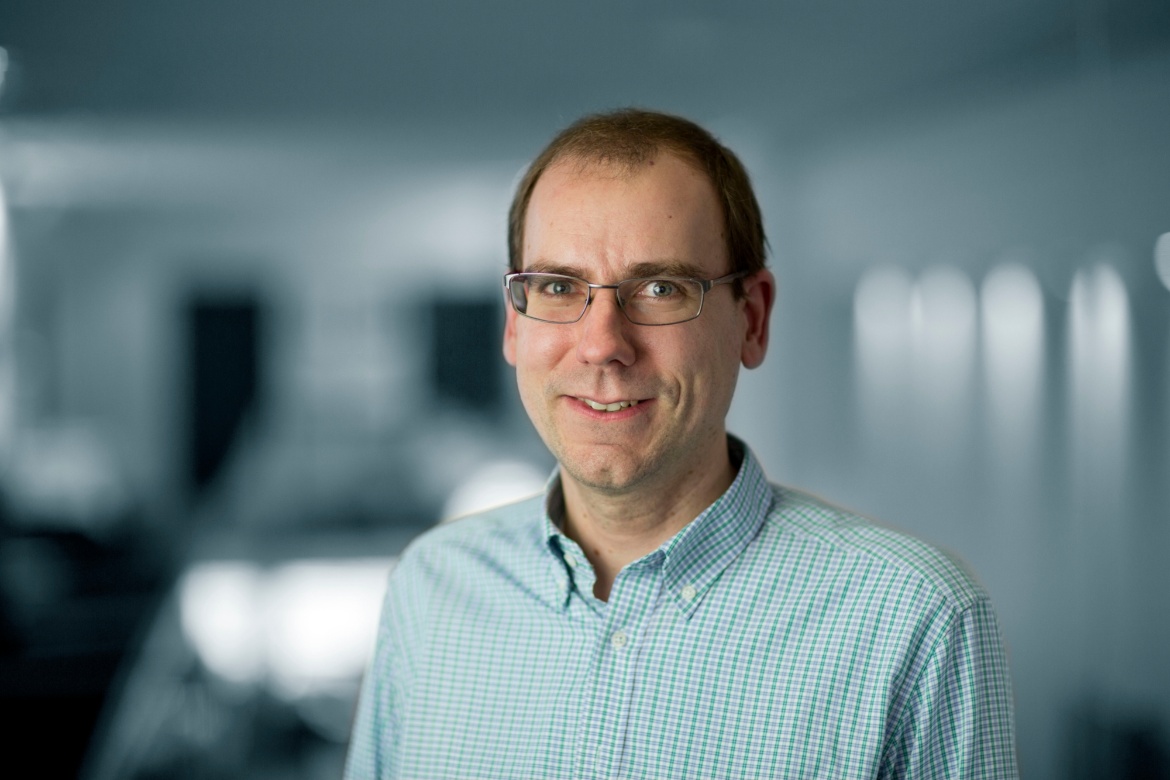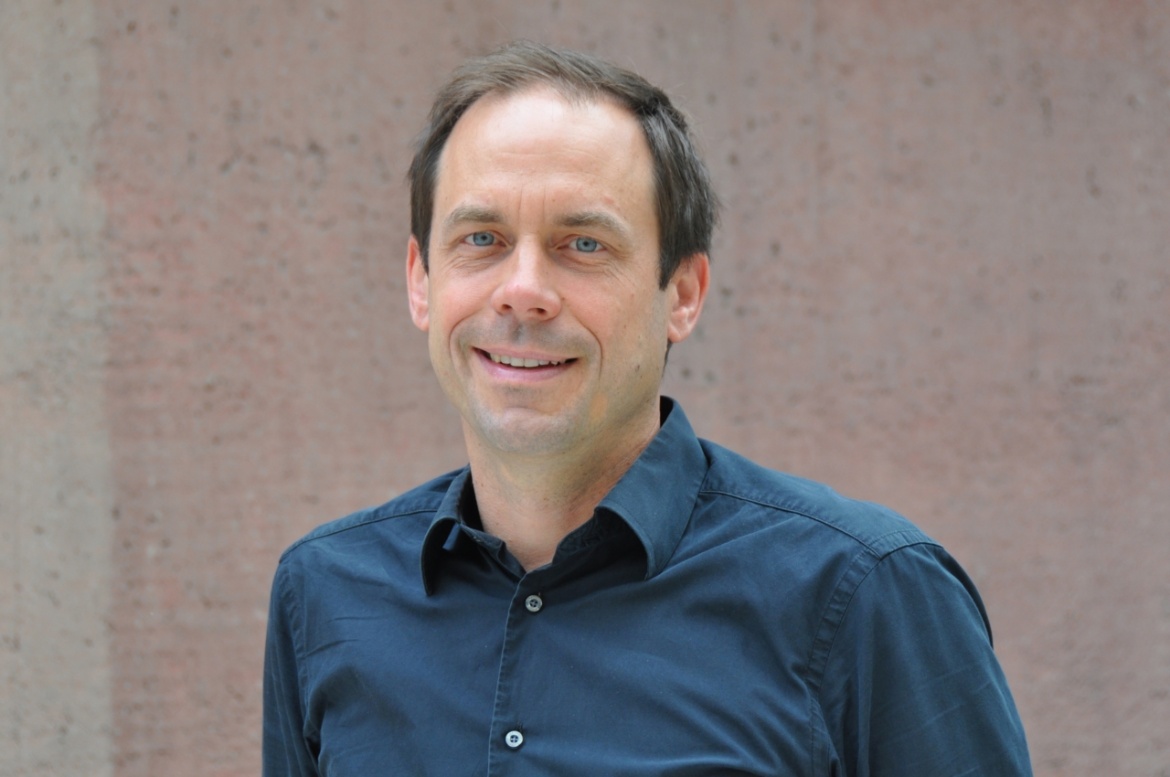With their research, Syn Schmitt and Niels Hansen showed that simulation scientists can even help to solve a murder case. Using a new computer-aided biomechanical simulation method and thermodynamic calculations, they were able to prove that a then 87-year-old woman could have fallen into her bathtub without foul play and died as a result of this fall at a time when the accused had an alibi. In July 2023, 63-year-old Manfred Genditzki, who had been in prison for more than 13 years, was acquitted.
The case
Lieselotte Kortüm was found dead in her bathtub in 2008. The caretaker of the residence, Manfred Genditzki, was suspected of having murdered the woman. Although he was able to refute the original accusation of stealing money, he was found guilty of murder. This is because the dead person had two hematomas on her head, which is why it was assumed that there had been a violent quarrel between her and Manfred Genditzki. However, he declared his innocence until the very end.
After four years in prison, the lawyer Regina Rick took over the defense of Genditzki and commissioned Professor Syn Schmitt, among others, with an expert opinion in order to obtain the resumption of the case. Already at the appeal in 2011, Schmitt was requested by the then lawyer as an expert, but this was rejected by the court. In the meantime, however, the method developed by the Stuttgart scientists was recognized by the Munich Higher Regional Court and in this case used for the first time in a forensic medical report.
Expert opinions are changing the state of evidence
In August 2022, after hearing the experts, the Regional Court of Munich I decided that the resumption of the proceedings was justified and that a new main hearing had to take place. Genditzky, convicted of murder and imprisoned for more than 13 years, was immediately released for lack of strong suspicion. This was mainly due to the changed state of evidence based on the biomechanical report of Schmitt and the thermodynamic calculations of Professor Niels Hansen. Hansen's research in the field of thermodynamics and thermal process engineering helped to limit the probable time of death to a period for which the caretaker could present an alibi.
Neuromechanical simulation
In addition to the mechanics of the biological body, its neurophysiology is also modeled, including the nervous system and its influence on the more than 600 muscles. The neuromechanical simulation is therefore biologically and physically closer to the natural model.
Numerous simulations to reconstruct the course of events
The team led by Syn Schmitt carried out numerous simulations to reconstruct the possible course of events in the bathroom. Using the biological data of the deceased woman, such as height, weight, the specific weight distribution in the elderly, and bone length, the scientists designed a person-specific model and reconstructed the incident. The question was whether, without third-party interference and starting from an initial position – a woman standing in front of the bathtub – a fall can lead to a final position that corresponds to the actual final state. Here, "final state" means that the body is lying in the bathtub, with two hematomas on the head, the shoes and the cane of the dead person being in front of the tub.
Simulation of the fall
The human model
The animation shows the human model of the reconstructed Lieselotte K. in a typical position when operating taps on the bathtub. The left hand is supported at the edge of the tub, with both legs trying to support the knees on the tub, and the body is already above the tub, with the upper body bent over. Several events could then be the cause of the following fall movement: acute dizziness, a neurological disorder, simple loss of balance, slipping on the ground, etc. The resulting fall movement causes the upper body to fall in, with at least two head contacts at the bathtub. At the same time, due to the torso rotation into the tub and the stiff joints of the old lady, the relieved leg is thrown back and included in the rotational movement. By coming into contact with the edge of the tub and with the upper body already lying in the tub, all of the right leg also moves into the tub. A partial or complete loss of consciousness caused by head contact leads to muscle relaxation and thus causes the body to remain in the assumed final position.
Pioneering for other proceedings
All simulations led to the same result: A fall without foul play was likely, so it could have been an accident. "Our method is able to determine objectively and transparently which movements are possible, depending on the laws of physics," Syn Schmitt explains. The experiments and theoretical calculations of Niels Hansen to limit the water temperature at the time of the discovery of the body also exonerated Manfred Genditzki. An established method for a temperature-based estimation of the time of death determined the probable time of death far beyond the actually assumed time of the crime. "Thermodynamic analysis was therefore an important building block and could be used in other proceedings," said Niels Hansen, commenting on the outcome of the trial.
"In fact, Bavaria has never had a life sentence lifted as part of a case resumption. The acquittal of Genditzky is thus a historic victory."
The Hamburg lawyer Dr. Gerhard Strate
The two scientists were delighted that their opinions made an important contribution to this trial. "For the first time, the biomechanical simulation method we co-developed was recognized as a method of proof in court. This is a great success for our science and, in particular, for the Stuttgart Cluster of Excellence 'Data Integrated Simulation Science'," adds Syn Schmitt.
About the scientists:
Niels Hansen is Deputy Director of the Institute of Thermodynamics and Thermal Process Engineering at the University of Stuttgart and Professor of Molecular Thermodynamics. In the SimTech Cluster of Excellence, he is researching the optimization of porous materials with applications in energy storage processes. Niels Hansen studied process engineering at the Hamburg University of Technology, where he received his doctorate in chemical reaction technology.
Syn Schmitt is Director of the Institute for Modeling and Simulation of Biomechanical Systems at the University of Stuttgart and Professor of Computational Biophysics and Biorobotics. He is conducting research in the SimTech Cluster of Excellence on the simulation of biomechanical systems. Syn Schmitt holds a Diplom in physics and completed a Physics and Physical Education Teaching Degree. After finishing his university studies, he received his doctorate in theoretical physics (biophysics) at the University of Tübingen.
In 2008, he joined the former SimTech Cluster of Excellence EXC310 at the University of Stuttgart, subsequently becoming a junior professor and finally taking up a professorship at the newly founded Institute for Modeling and Simulation of Biomechanical Systems in 2018.





